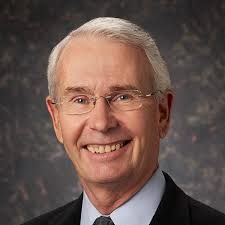https://www.youtube.com/watch?v=TOw2Hj_bijc&list=PLl8w4K6sFBpKZjx1OR288mh1ouPWqyHhd&index=3
Summary
The video explores the intriguing concept of “blind spots” in human perception and decision-making, illustrated through compelling stories of well-known historical figures and events. Blind spots are cognitive or perceptual gaps where individuals fail to see critical information or realities, sometimes leading to catastrophic outcomes or missed opportunities. The speaker introduces this concept by referencing famous movie moments from The Sixth Sense and A Beautiful Mind, where sudden revelations create a powerful dopamine rush, highlighting how blind spots shape our understanding.
Blind spots can be destructive or constructive. The speaker categorizes them into two types: “precipice blind spots,” which lead to ruin or failure, and “gateway blind spots,” which obscure paths to opportunity and success. Using examples such as Henry Ford’s stubborn insistence on selling only black Model T cars despite market losses, Steve Jobs’ regretted choice of alternative cancer treatment, General Custer’s fatal arrogance at the Battle of Little Bighorn, Dick Fuld’s dismissal of risk warnings before Lehman Brothers’ collapse, and Ron Johnson’s disastrous overhaul of JCPenney, the speaker illustrates how even highly intelligent and successful people can fall victim to blind spots.
On the other hand, the speaker shares positive examples of individuals and companies who identified gateway blind spots and leveraged them for growth, such as a printing company that shifted from selling printed materials to installing promotional materials, a cement company that adopted a Domino’s-style delivery model, and Katy Perry’s genre shift from gospel to pop that launched her career. The video concludes with a promise to delve deeper into the neurochemical mechanisms behind blind spots—such as the roles of dopamine, serotonin, oxytocin, adrenaline, cortisol, and endorphins—and how understanding these can help individuals overcome blind spots to avoid failure and achieve greatness.
Highlights
- Introduction referencing The Sixth Sense and A Beautiful Mind to illustrate the powerful experience of uncovering blind spots.
- Demonstration of the visual blind spot exercise, showing how our brain sometimes fails to perceive certain stimuli.
- Henry Ford’s 15-year refusal to sell cars in any color but black leads to a 75% market loss—an example of a precipice blind spot.
- Steve Jobs’ regret over choosing alternative cancer treatment highlights how blind spots can affect life-or-death decisions.
- General Custer’s last stand as a case of arrogance and blindness to reality resulting in catastrophic defeat.
- Dick Fuld ignoring risk warnings contributed to the 2008 Lehman Brothers collapse—an example of dangerous blind spots in leadership.
- Positive gateway blind spot examples: a printing company and a cement company that innovated their business models to achieve massive growth.
Key Insight
The “dopamine rush” experienced upon discovering a blind spot underscores the neurological impact of sudden insight, which can be both exhilarating and transformative. This neurochemical reward highlights why uncovering blind spots can feel profoundly significant and motivate change.
The blind spot exercise reveals that human perception is inherently limited—our brain selectively filters information, sometimes invisibly omitting critical data. Recognizing this limitation is key to better self-awareness and decision-making.
Henry Ford’s adherence to tradition despite clear market signals exemplifies how cognitive rigidity and emotional attachment to ideas can create dangerous blind spots, even in highly successful innovators. This warns against complacency and inflexibility in leadership.
Steve Jobs’ choice to avoid conventional medicine illustrates how blind spots are not limited to trivial mistakes but can have profound consequences on health and survival, showing the importance of balancing intuition with evidence-based decisions.
General Custer’s fatal arrogance demonstrates how blind spots can masquerade as confidence or courage, misleading individuals into underestimating risks and ignoring critical intelligence, which can lead to disastrous outcomes. This highlights the need for humility and critical self-reflection in leadership.
Dick Fuld’s dismissal of risk advice before Lehman Brothers’ collapse shows how willful ignorance or denial—common aspects of blind spots—can escalate into systemic failure, emphasizing the importance of listening to dissenting voices and data in crisis management.
The gateway blind spots revealed through the success stories of innovative companies and individuals underscore that blind spots are not only pitfalls but also opportunities. Recognizing what is unseen or undervalued can unlock new pathways to exponential growth and success, encouraging a mindset of continuous exploration and adaptation.
Conclusion
The video ultimately advocates for greater awareness and understanding of blind spots through neuroscience and psychology, encouraging viewers to develop tools and strategies to navigate these cognitive gaps for personal and professional growth.
Contributor:

Nick Vaidya, MS, MBA, PhD (c)
Email:
nick@8020strategy.com
LinkedIn:
linkedin.com/in/nickvaidya
YouTube:
youtube.com/channel/UC9OPMJeujF-ImmsFV1OfrHg
Nick Vaidya is a Wiley Best-Selling author and a regular columnist for Forbes India and The CEO Magazine. He has worn many hats — from University Faculty to CEO/CXO roles across startups, SMBs, and a unicorn — and has also led Strategy and Pricing teams for $8B product line at a Fortune 10 company. Today, Nick helps SME CEOs scale their businesses using his proprietary framework, which focuses on transforming the way meetings are conducted — driving cultural shifts and accelerating organizational growth.


